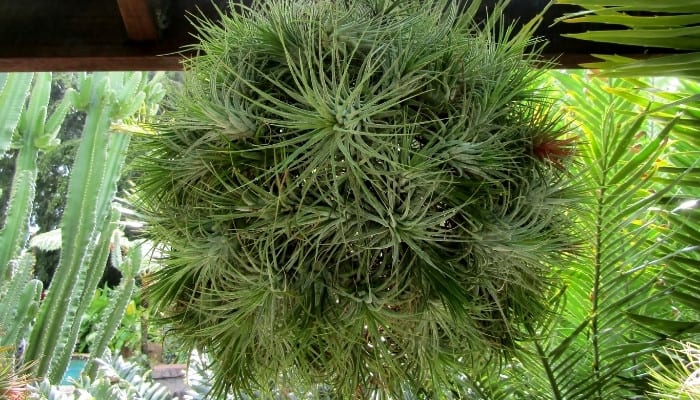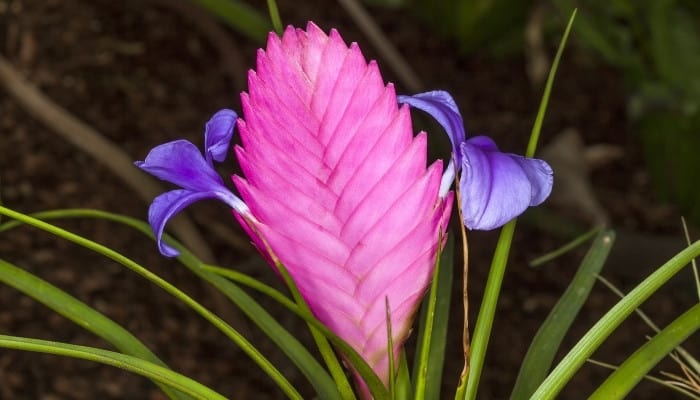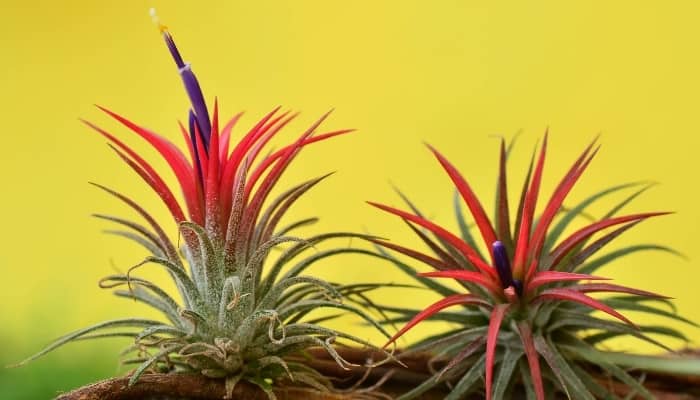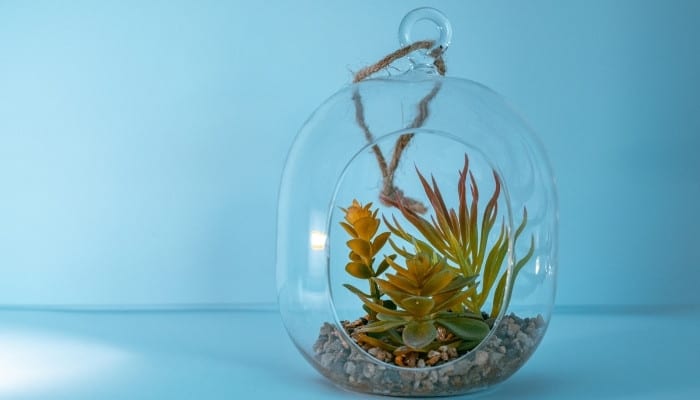Air plants, known as Tillandsia, can be found in their natural state across the southern United States, Central America, and South America.
Growing high in the canopies of trees, they seem to survive on nothing but air, and in a lot of ways, this is true.
Can air plants grow in terrariums? Air plants do exceptionally well and typically thrive in terrariums as long as they get plenty of indirect sunlight, air circulation, and water. Tillandsia plants get nutrients from the air and require no soil at all, so you can be as creative as you wish when setting up an air plant terrarium.
Keeping air plants in terrariums makes it possible for you to display your beautiful plant babies in unique and creative ways.
In the following you’ll learn all about how to keep your air plants happy and healthy in a terrarium – everything from initial setup to care to design ideas.
Growing Air Plants in Terrariums
Air plants are incredibly versatile plants that are as fascinating as they are beautiful.
Keeping them happy in a terrarium is simple as long as you remember to provide the essential things an air plant needs to survive.
What Air Plants Need To Survive
Air plants need a few basic things to survive – water, nutrients, and sunlight.
Air plant leaves are covered with water-absorbent cells called trichomes that take up all of the water an air plant needs to survive.
They often live up high in the trees, absorbing sunlight and rainfall and taking nutrients from wandering dust and debris from the air and the trees around them.
How To Plant Air Plants in a Terrarium
Young air plants generally don’t have roots, and even more mature plants only use their roots for structural support.
You can just about plunk them down and call it a day. Start with an open terrarium that allows for plenty of air circulation.
Cover the bottom with a base of sand or aquarium gravel. Then, arrange your air plants as you like.
They don’t have to be perfectly upright. In fact, they should be slightly inverted for best results because that position prevents excess water from collecting inside the plant.
Some people like to secure their air plants to a surface with glue, twine, or wire, but this is unnecessary and makes them more difficult to water.
How To Take Care of Air Plants in a Terrarium
Air plants are incredibly low maintenance once planted. Give the terrarium bright direct or indirect sunlight.
Watch your air plants closely at first for signs of burning, such as brown or crispy leaves, and offer them more shade if needed.
Your air plant will absorb nutrients from the air year round if your terrarium allows plenty of air to circulate.
In arid climates, you can mist your air plant inside the terrarium with rainwater or distilled water to keep the leaves soft and moist between soaks.
How To Water Air Plants in a Terrarium
A happy, healthy air plant requires regular soaking. Water your air plant by removing it from the terrarium and dropping it in a bowl of rainwater or distilled water.
Take it out after half an hour and shake it gently to remove any excess water, which can cause your Tillandsia plants to rot.
Once your air plant has air dried, put it back in your terrarium. From spring until autumn, repeat this process once or twice a week or more in dry climates.
In summer, about once a month, add a bit of orchid fertilizer (Miracle-Gro is great for this) to the water and leave them to soak overnight.
Avoid using tap water to soak your air plants.
Tap water contains minerals that can stick to the trichomes and prevent the plants from soaking up the water they need, no matter how often you water them.
Best Air Plants for Terrariums
Tillandsia bergeri

This silvery green air plant does well in terrariums. When it’s ready to reproduce, it blooms in pink, lavender, and white.
Tillandsia cyanea

This air plant produces a showy pink, paddle-shaped flower spike. It’s stunningly beautiful in a terrarium or a pot.
Tillandsia ionantha

This is what many people think of when they imagine an air plant. Young plants look like tiny pineapple crowns but eventually grow into long, spiraling leaves.
Air Plant Terrarium Ideas
Minimalist
Get a large glass terrarium and put just a little bit of sand in the bottom. Add one or two air plants, and you have a minimalist terrarium landscape that lets your air plants shine in all their glory.
Natural Art
On the opposite end of the spectrum, you can load your terrarium with all kinds of natural materials with air plants interspersed in between.
Pieces of driftwood, abandoned beehives, pine cones – the possibilities are endless. Turn your air plant terrarium into a seasonal ode to the outdoors.
Bright and Colorful
Because air plants absorb nutrients from the air and not the earth, feel free to get a little unorthodox with your terrarium materials.
Aquarium gravel and décor are inexpensive and come in vibrant neons that make an out-of-this-world backdrop for your alien-looking plants.
Related Questions:
Here are a couple of additional common questions about air plant care.
How Long Do Air Plants Live?
Tillandsia air plants are perennials, which means they live for more than two years. However, different cultivars have different lifespans, and the care you provide them makes a big difference.
They’re near the end of their lifespan when they produce flowers, but don’t throw them out just yet.
After they bloom, they’ll produce clones of themselves called pups or offsets that will grow in place into individual plants.
Can Air Plants Live Without Sunlight?
Air plants cannot live in complete darkness or artificial indoor light. Most air plants will do fine as long as they’re getting some indirect light, though they may grow slowly.
If you keep your air plants in a windowless office, you’ll need a full-spectrum fluorescent light (like this lamp with four arms and five light levels) to provide artificial sunlight.
Conclusion
The unique nature of air plants and their survival makes them perfect for a creative, low-maintenance terrarium arrangement.
With just a little bit of plant know-how, you can keep your air plants happy and healthy in an eye-catching terrarium.
Sources:
https://garden.org/learn/articles/view/765/
https://www.rhs.org.uk/plants/types/houseplants/air-plants
https://garden.org/plants/view/145045/Air-Plant-Tillandsia-bergeri/
https://garden.org/plants/view/116741/Pink-Quill-Tillandsia-cyanea/
https://garden.org/plants/view/371198/Air-Plant-Tillandsia-ionantha-var-ionantha/

